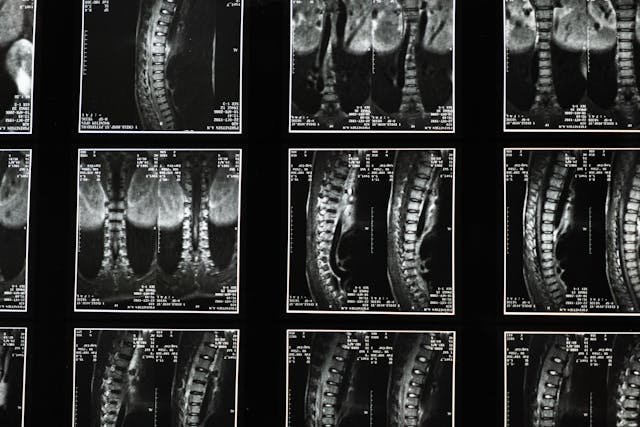Although learning about spine surgery can be intimidating, doing so can help you experience better pain management and a higher quality of life. Millions of people suffer from spine discomfort, which frequently interferes with everyday activities. This article guides you through the essential aspects of spine surgery. Each part offers insightful information on a variety of spine procedures, non-surgical treatments, and selecting the best surgeon. It also discusses what to anticipate throughout the recovery and rehabilitation period following surgery, as well as how to get ready for surgery.
Table of Contents
Exploring Non-Surgical Options
Investigate non-surgical spine pain management options before deciding on surgery. A typical first step is physical therapy, which helps to increase flexibility and strengthen muscles. Painkillers and anti-inflammatory medications, for example, help lessen discomfort. Injections, such as epidural steroid injections, reduce inflammation surrounding the nerves to relieve pain temporarily. There are advantages and disadvantages to each of these treatments. While less intrusive than surgery, physical therapy and prescription drugs could not offer long-term relief from serious problems. To find the non-surgical solutions that are best for your condition, you must speak with a healthcare expert. Considering these therapies can frequently postpone or remove the need for surgery, offering safer and more effective pain management.
Types of Spine Surgery
Different forms of spine surgery may offer relief when non-surgical therapies are ineffective. A discectomy releases pressure on the nerves by removing a portion of a herniated disc. By removing the lamina, a portion of the vertebral bone, laminectomy relieves pressure on the spinal cord and surrounding nerves. A common treatment for disorders like degenerative disc disease is spinal fusion, which joins two or more vertebrae to stabilize the spine. There are distinct benefits, dangers, and indications for every surgery. While they may not require as much recovery time, discectomy and laminectomy can swiftly ease pain. Long-term stability is provided via spinal fusion, but recovery time is increased. Being aware of these processes enables you to choose your course of treatment with knowledge. To get the best potential outcome, discuss with your surgeon the appropriate course of action for your disease.
Choosing the Right Surgeon
Selecting the appropriate surgeon is essential to the outcome of spine surgery. Seek a spine surgeon with a solid track record who is skilled and experienced. Consider their qualifications, including board certification and specific spine surgery training. Experience counts; a surgeon with plenty of similar surgeries under their belt is more likely to produce satisfactory results. Testimonials and reviews from patients shed light on the surgeon’s skill and bedside demeanor. Consult your primary care physician or acquaintances who have had spine surgery for recommendations. If you’re in the area, consulting a reputable spine specialist in Phoenix can provide you with access to top-notch care and expertise. Additionally, meet with prospective surgeons to go over your diagnosis and available courses of care. Assess their ability to communicate and willingness to respond to your inquiries. Your chances of a successful operation and recovery improve significantly if you choose your surgeon wisely.
Preparing for Surgery
A successful outcome from spine surgery requires careful planning. To make sure you are in good health, begin with pre-surgery consultations and tests. Pay close attention to the directions given by your surgeon; they could ask you to stop taking specific drugs or change your diet. Strengthening exercises are one type of physical preparation that might speed up your body’s recovery. It is equally vital to prepare yourself mentally, be aware of the surgical procedure, and establish reasonable expectations. To alleviate any worries, go over possible risks and benefits with your surgeon. Make plans for the care that will follow surgery, such as home support and transportation to follow-up appointments. You can ensure a more favorable outcome and a quicker recovery period by planning your procedure meticulously.
Post-Surgery Recovery and Rehabilitation
Regaining mobility and minimizing pain following spine surgery depends heavily on recovery and rehabilitation. Depending on the kind of surgery you had and your general health, your recovery time will change. Pay strict attention to your surgeon’s post-operative care instructions. This entails adhering to follow-up appointments, taking prescribed drugs, and refraining from physically demanding activities. Physical therapy is essential to the healing process since it helps you regain your flexibility and strength. Take part in the recommended workouts to accelerate your recovery. It’s critical to control post-operative pain; follow your doctor’s recommendations for pain management techniques. The important things are to be persistent and follow your recovery strategy. You can have a successful recovery and resume your regular activities with less pain if you concentrate on your recovery and rehabilitation.
Conclusion
To sum up, spine surgery may be a critical step toward reduced pain and increased mobility. Gaining knowledge about different surgical treatments, non-surgical options, and your spine condition can empower you to make well-informed decisions. Crucial actions include selecting a board-certified surgeon and being ready for surgery on both a physical and mental level. For the greatest results, post-surgery healing and rehabilitation call for patience and strict adherence to care guidelines. You may navigate the path to pain relief and a healthier spine, improving your entire quality of life by making well-informed decisions and preparing thoroughly.










